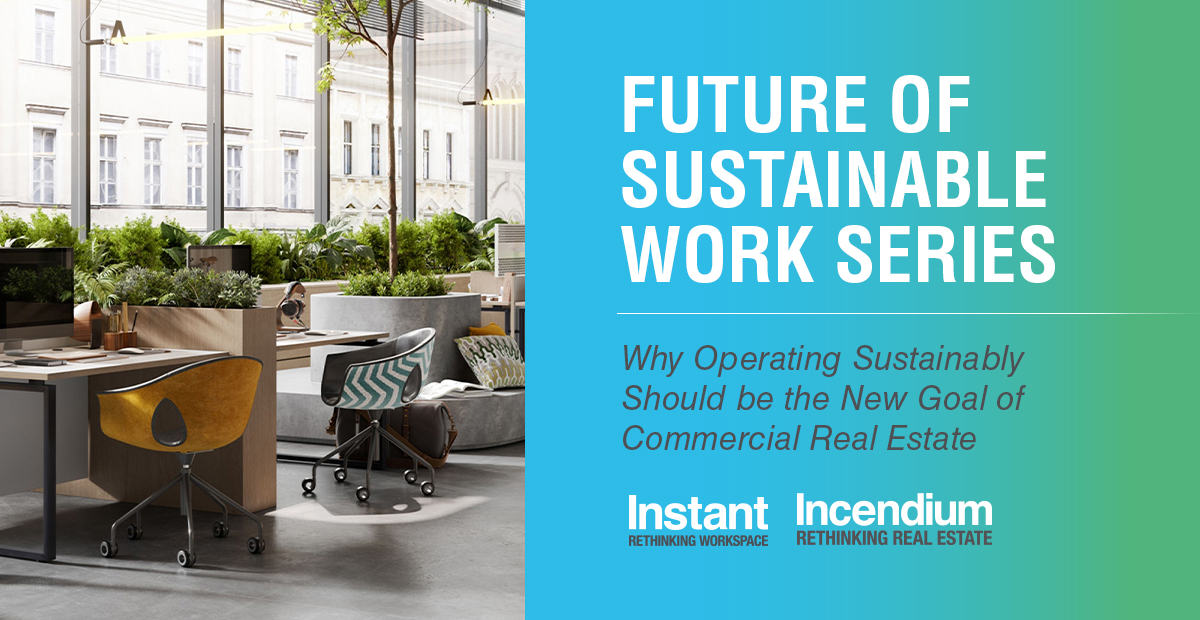“Old” models of office occupancy are failing our goal of the net zero workplace. How can leaders in CRE play a role in supporting sustainable transformation?
By: Mike Bascombe, Principal Consultant at Incendium Consulting

The contemporary landscape of CRE offers several options for customers to acquire space and meet personal demands, but the current measurement tactics fail to account for operational reality.
Across the industry, long or shorter-term leases, subscription managed services, and flexible commoditized space are the most prevalent CRE models. Each model has a set of pros and cons that can suit the specific requirements of each company.
In 2022, businesses are facing growing pressure to adapt in several directions at once. One of those pressures, which brings with it a great deal of opportunity, is for companies to operate more sustainably.
Investors, customers, and workforces are the three core groups whose opinions guide the direction of adaptation for businesses, and all three are prioritizing sustainability. Investors recognize the long-term value add that sustainability practices offer, especially in terms of reduced risk and increased resilience for supply chains.
Moreover, customers are engaging in an ecosystem based on transparency and disclosure where their value chain is being scrutinized in more detail. The contemporary workforce is simply unwilling to work for companies without purpose and ethics, the underlying principles which companies should be embracing through sustainability. How, then, can CRE play a role in supporting a company’s sustainable transformation, and which model works best?
My view is that flexible space serves sustainability most effectively and offers customers an unmatched set of opportunities. In our post-Covid world, the office has a different role. It is no longer a necessity for the daily grind, nor simply part of the process. It is also used by far fewer people than the office of the past.
The workplace has become a hub, a place which allows for and encourages specific business functions and team practices whilst serving a company’s wider goals. They should be a place built around collaborative behaviors designed to enable creativity and foster team building.
From a design perspective, flex space has always focused on these areas, so it is perfectly positioned to serve this new role. In the service of sustainability goals, it is even better suited.
HOW IS FLEX MORE SUSTAINABLE?
Most fundamentally, flexible offices are more sustainable because of how they are utilized. Unused desks are wasted carbon. In this crucial decade where countries are driving towards net zero targets and companies are graded by their emissions, making sure that carbon usage is optimally efficient is demanded. Since flex has higher utilization, it is therefore far more carbon efficient.
The problem to date is that traditional intensity metrics don’t reflect contemporary usage. Normally, emissions are measured across the square footage of office space. This favors large, fixed spaces with traditional banks of desks but is based on a wholly flawed assumption that those desks are all being used.
This is why new metrics must be created that offer a new way of examining space with transformative results. Instead of emissions over square footage, for the first time we can look more closely at emissions by occupant. This reflects real-world usage of office space, where, for example, London is currently hovering around 30% of desks used. If this metric is used, flex is far more efficient due to its higher occupancy.
What new metrics allow for is an analytics-based business case for companies looking to move to the flex model. Our initial results show leased offices as three times higher in emissions than flex spaces, based on a 2021 data set across 100 London offices.
If your company has a net zero goal, or investors are asking for CDP disclosure before committing, the flex model offers the most sustainable option along with increased efficiency and reduced cost against current leased models. Flex is now demonstrably more sustainable.
